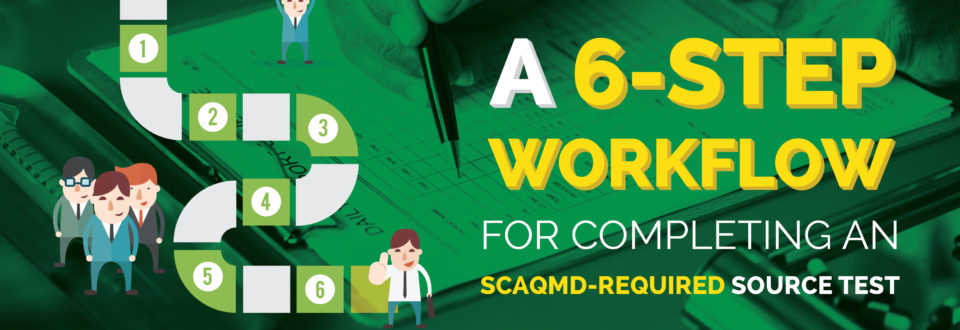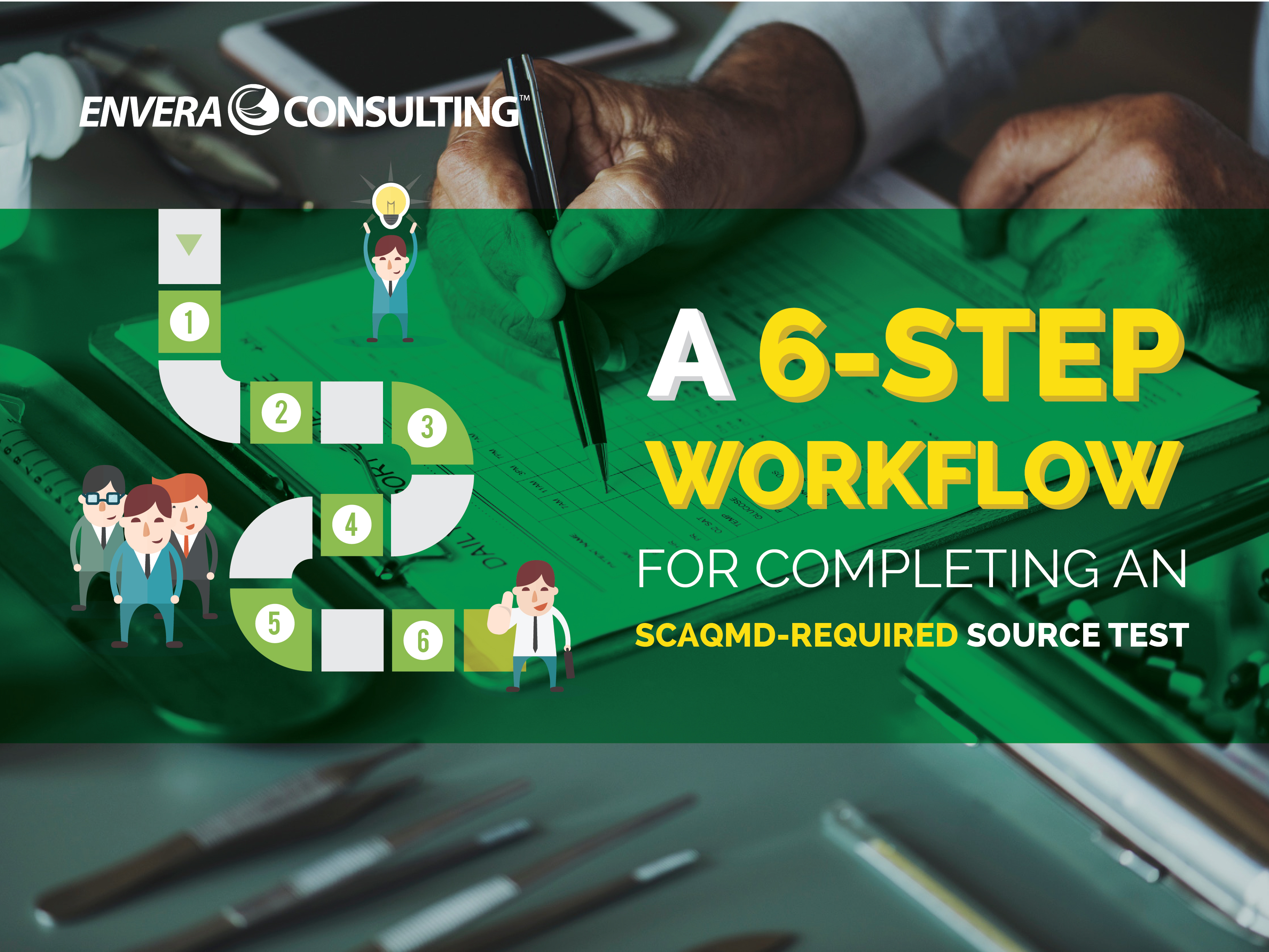

Yes, getting that ever-important SCAQMD permit is important (and often cause for celebration, depending on how arduous the process was for you). But what happens after you get your permit can be equally as critical to your company.
Once your permit has been issued, you may need to complete a source test, also known as an emissions test, on your piece of equipment.
SCAQMD Rules 201 and 202 require all pieces of equipment to obtain permits for construction and operation of the units. (As with any rule, there are exceptions. Some equipment might be exempt.)
Most SCAQMD permits are issued as a combined construction and operation permit. If you have one of these combined permits, then there are a few things you need to know about the permit as it relates to the equipment and the testing of the equipment:
- Permit lifespan. The combined construction/operation permit expires after one year from the date the document was issued. In some cases, you can extend the lifetime of the permit, although such cases aren’t very common.
- Conversion from construction to operational permit. A construction permit becomes an operational permit when the client notifies the SCAQMD that construction is complete. The construction permit is then converted to a temporary permit to operate. To make your permit a full-fledged permit to operate, you need to conduct a source test to demonstrate that your equipment is able to meet the requirements set forth by the permit.
Those are the two biggies, but you can read more important facts in our article. Also note that the source test must be performed by an SCAQMD-approved testing firm. You can check out a current list of approved testers. The approved tester must also be able to certify that they are free of any conflicts of interests with the folks conducting the test (i.e., you). Conflicts of interests are defined in Rule 304 (k).
Now that we’ve got those formalities out of the way, let’s get to the actual process of completing a source test.
1. Submit a Source-Test Protocol
If a source test is required by a rule or permit condition, then the test must be an approved test, which requires submitting a source test protocol to the air district for approval before you conduct the actual test.
We recommend the source test protocol be prepared by both the source-testing firm and the folks who prepared the permit application, as there can be specific issues that need to be resolved during the source test. For example, if you’re source-testing a coffee roaster, you want to make it explicit in the protocol that any NOx testing for Rule 1153.1 compliance is conducted in the absence of coffee beans.
Note that we also highly recommend that you hire a firm as the SCAQMD likes to know that there’s no conflict of interest between the test conductor and the owner of the equipment being tested. That means the SCAQMD more than likely won’t approve a source test conducted by the equipment owner herself.
2. Get SCAQMD Approval for the Protocol
Once your source-test protocol is submitted, the air district will review your protocol and provide comments and recommendations on the proposed test. If there are changes that need to be made to the protocol, you must read the SCAQMD’s response to see if the test can proceed with or without further discussion.
In most cases, the air district will reply that the test can proceed once the testing firm makes the protocol changes noted in the SCAQMD’s review. They usually also tack on a note stating that the test can then proceed without further input from the SCAQMD staff. Here’s an example of one such SCAQMD response:

3. Inform the SCAQMD of Your Test Date
Once you receive your approval — and you’ve given high-fives all around — you need to select a date for your source test, which you should do in conjunction with your testing firm. You must then provide a written confirmation to the SCAQMD at least 14 days before the test date so that a representative from the air district can witness the test, if the district so chooses.
4. Conduct the Source Test
On the day of the test, be sure that it is performed without any deviations from the protocol that was approved by the SCAQMD. Doing otherwise might seriously mess up your chances of getting that full-fledged permit. Also, clean up your desk. The SCAQMD will be on site and you want to make the best impression possible.
5. Submit the Test Results
Once testing is completed, submit the final results to the SCAQMD within the time frame noted in the permit condition, usually 45 days. If no time frame is mentioned, that doesn’t mean you can take your sweet time about submitting the results. Stay on the air district’s good side and ask your SCAQMD engineer when they need them by. Once the agency receives your report, it may reach out to you for clarification of any details — so be prepared.
6. Receive Certificate
Follow up with the SCAQMD to find out about the status of the review. If your test results are approved, you’ll usually be issued a certificate of approval. We’ve sometimes received approval letters in as few as two weeks — and sometimes we don’t get one at all. If you require the approval letter for some reason, ask your SCAQMD engineer when you might expect the results.
The above is a very generalized outline of the process for conducting a source test for your permit. Keep in mind that there may be more or fewer steps, depending on your particular situation.